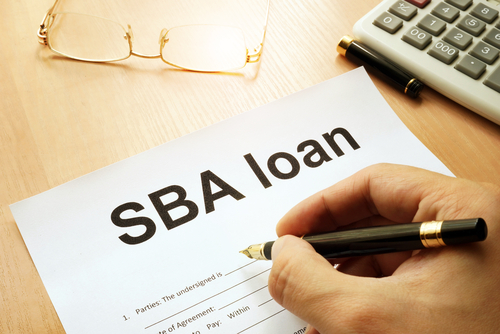Here’s everything you need to know to navigate the tumultuous waters of the SBA loan default process. *As of June 1, 2024, does not apply to EIDL loans.

An SBA loan is granted to small businesses that otherwise would not qualify for a loan through traditional lenders. The business receives the funds because the lender’s risk is mitigated by the Small Business Administration’s guaranty. If the loan goes into default, the government will cover up to 90% of the lender’s loss. For this reason, the program does wonders for stimulating the economy and creating millions of jobs.
Naturally, these loans are also riskier bets and more prone to default. If you find yourself in default on your SBA loan, you are certainly not alone. Second Wind has been helping clients navigate complicated business debt negotiations for decades. Here are our best tips and resources for handling this tricky situation.
We have organized this page around the various stages of default that you may find yourself in so you can jump directly to the section that most pertains to your situation.
- Early Default: What are My Options?
- Which Assets are in Jeopardy? How Do I Protect Myself When in Default on my Loan and a Resolution is not Reached?
- Offer in Compromise (The SBA Debt Settlement Process)
- Life After Default
Early Default: What are My Options?
If you are struggling to make your SBA loan payments, this is likely a symptom of a much bigger problem in your business. Perhaps you never had the working capital you needed to reach your goals. Maybe a large customer is slow in paying or you’re still recovering from a sales slump. Whatever the case may be, you should first start by making reductions in overhead, growing sales and managing your finances better. Understand the best way to prioritize your business debts and create a manageable debt repayment plan.
Lastly, if your lender denies any SBA loan modifications or deferments then you need to consider a debt workout or an exit from the business—preferably one that keeps you from losing everything. We offer free consultations and can walk you through this process step-by-step.
You should also consult with an attorney who specializes in these matters, but keep in mind that most legal defenses will fail. You borrowed the money and cannot pay it back, so your creditors will likely obtain a judgment against you no matter what you do. Learn more about the legal defense for SBA loan defaults and why they so often fail.
Which Assets are in Jeopardy?
Your Bank Account
When you enter default on your SBA-backed loan, your business bank accounts can be jeopardized. If you have accounts in the same bank that is holding your loans, the lender has the “right of offset,” which allows them to take funds from your accounts to cover past-due payments. To protect both your business and personal bank accounts, consider moving these funds to a new bank, but be aware that lenders have other means of getting to your bank accounts, even in a different financial institution.
Your Home
Many SBA-backed bank loans require a lien on your personal residence. When you settle your SBA debt, you will want to make sure you follow the process for also obtaining a lien release on your home. You want the bank out of your life forever, so don’t make the mistake of settling your personal guaranty but leaving the liens in place. They could come back and bite you many years later after you have forgotten about them.
Your Retirement Savings
Clients ask us all the time, “Can creditors come after my retirement?” There is no clear-cut answer to this question, as it depends on the laws in your State of residence; while most States have laws in place to protect your nest egg, this is not the case everywhere. Definitely do some research and reach out to Second Wind Consultants if you still have questions.
Offer in Compromise (The SBA Debt Settlement Process)
The SBA has a particular process for helping borrowers who have defaulted and liquidated their business. You can settle your SBA debt by filing an offer in compromise (OIC) directly with the lender who issued the loan. The bank evaluates each settlement offer based on specific criteria that you must meet. If you do, your OIC goes through several levels of approval before your it is accepted and you are relieved of further liability. You should know that it is possible to settle your SBA debt for a fraction of the balance; we do it all the time for our clients.
If you’re going it alone, here’s what to include in an SBA hardship letter if you want the best chance of acceptance.
Life After Default
So you have successfully settled your SBA-backed bank loan obligation. Congratulations!
Time to move on with your life and rebuild your finances, credit and confidence as a business owner. Before you do, however, you need to ensure you clear any remaining SBA liens and judgments, and that you do not have any remaining tax obligations.
There is a debt forgiveness boogeyman known as debt cancellation income. The IRS states that if you are forgiven a debt of $600 or more, that is equivalent to receiving income, so they list the forgiveness as income on your tax returns.
Yikes!
This could be a massive tax bill if you receive forgiveness on a large business loan. But don’t worry, the majority of our clients don’t pay taxes on their debt forgiveness. Just ask us how.
Still Need Help?
Contact us for a free consultation. We will review your situation and provide an honest assessment of your debt schedule. Together, we will design an effective strategy to help you navigate these dire straights.

